Do you have a question about the Craftsman 113.234600 and is the answer not in the manual?
Steps to complete before plugging in the saw for safe operation.
Precautions to prevent accidental movement and injury.
Safety measures related to the tool's electrical design.
Daily checks to ensure safe operation before starting work.
Guide to inspecting the saw for any damaged components.
Advice on keeping the saw clean and functional for best performance.
Precautions for preventing material binding or ejection.
Recommendations for personal protective equipment and planning.
Importance of understanding tool features, applications, and hazards.
Crucial step to ensure the saw is off before plugging it in.
Emphasizes planning cuts to ensure safety and efficiency.
Using the tool for its intended purpose to avoid damage or injury.
Definitions of common woodworking terms used in the manual.
Details on the saw's motor power, voltage, and other electrical specs.
Information regarding the saw's power cord and plug type.
Guidelines to protect the motor from damage during operation.
Recommendations for extension cord wire gauge based on length.
Lists tools required for assembly and alignment of the miter saw.
Identification of key parts and features of the miter saw.
Instructions for attaching and ensuring proper function of the lower blade guard.
Procedure to check and adjust blade squareness to the saw table.
How to align the blade with the turntable slot for accurate cuts.
Procedure to ensure the blade is square to the fence for precise cuts.
How to reposition the miter scale indicator for accurate readings.
Adjustments for smooth and free movement of the saw's pivot joints.
Adjusting the bevel pivot for smooth tilting of the power head.
Explanation of the depth stop's function and factory setting.
Adjusting the depth stop for optimal cutting with blade wear.
Description of the two fence positions and their uses.
Explanation of the trigger switch function and lock-off button.
Step-by-step guide for safely removing and installing the saw blade.
Guidance on positioning and securing the saw to a workbench or leg set.
Details on dimensions and holes for mounting the board to a leg set.
Proper positioning for safe and effective operation of the saw.
Instructions for performing angled cuts across the workpiece width.
Instructions for tilting the blade to make angled cuts.
Performing cuts that combine bevel and miter angles simultaneously.
Proper technique for cutting warped workpieces to avoid pinching.
How to support long workpieces for stability and safety.
Using an auxiliary fence for specific molding cuts.
How to use filler blocks for cutting crown moldings at specific angles.
Technique for making vertical bevel cuts on workpieces.
General advice on maintaining the saw and its lubrication needs.
Procedure for replacing worn carbon brushes for motor maintenance.
Importance of the lower guard and its maintenance.
How to manage sawdust accumulation for proper saw function.
List of approved accessories for use with the saw.
Specifications for suitable saw blades.
Information on lubrication needs for the motor and guards.
Guide to diagnosing and resolving motor-related issues.
Guide to diagnosing and resolving general operational problems.
Exploded view diagram of the miter saw components.
Detailed parts list with key numbers and part descriptions.
Exploded view and parts list for the arm and motor components.
Exploded view and parts list for the pivot assembly.
Exploded view of the blade and blade guard assembly.
Detailed parts list for the blade and blade guard assembly.
Crucial safety guidelines for using carbide-tipped saw blades.
Important safety advice for handling and using carbide blades.
Steps to complete before plugging in the saw for safe operation.
Precautions to prevent accidental movement and injury.
Safety measures related to the tool's electrical design.
Daily checks to ensure safe operation before starting work.
Guide to inspecting the saw for any damaged components.
Advice on keeping the saw clean and functional for best performance.
Precautions for preventing material binding or ejection.
Recommendations for personal protective equipment and planning.
Importance of understanding tool features, applications, and hazards.
Crucial step to ensure the saw is off before plugging it in.
Emphasizes planning cuts to ensure safety and efficiency.
Using the tool for its intended purpose to avoid damage or injury.
Definitions of common woodworking terms used in the manual.
Details on the saw's motor power, voltage, and other electrical specs.
Information regarding the saw's power cord and plug type.
Guidelines to protect the motor from damage during operation.
Recommendations for extension cord wire gauge based on length.
Lists tools required for assembly and alignment of the miter saw.
Identification of key parts and features of the miter saw.
Instructions for attaching and ensuring proper function of the lower blade guard.
Procedure to check and adjust blade squareness to the saw table.
How to align the blade with the turntable slot for accurate cuts.
Procedure to ensure the blade is square to the fence for precise cuts.
How to reposition the miter scale indicator for accurate readings.
Adjustments for smooth and free movement of the saw's pivot joints.
Adjusting the bevel pivot for smooth tilting of the power head.
Explanation of the depth stop's function and factory setting.
Adjusting the depth stop for optimal cutting with blade wear.
Description of the two fence positions and their uses.
Explanation of the trigger switch function and lock-off button.
Step-by-step guide for safely removing and installing the saw blade.
Guidance on positioning and securing the saw to a workbench or leg set.
Details on dimensions and holes for mounting the board to a leg set.
Proper positioning for safe and effective operation of the saw.
Instructions for performing angled cuts across the workpiece width.
Instructions for tilting the blade to make angled cuts.
Performing cuts that combine bevel and miter angles simultaneously.
Proper technique for cutting warped workpieces to avoid pinching.
How to support long workpieces for stability and safety.
Using an auxiliary fence for specific molding cuts.
How to use filler blocks for cutting crown moldings at specific angles.
Technique for making vertical bevel cuts on workpieces.
General advice on maintaining the saw and its lubrication needs.
Procedure for replacing worn carbon brushes for motor maintenance.
Importance of the lower guard and its maintenance.
How to manage sawdust accumulation for proper saw function.
List of approved accessories for use with the saw.
Specifications for suitable saw blades.
Information on lubrication needs for the motor and guards.
Guide to diagnosing and resolving motor-related issues.
Guide to diagnosing and resolving general operational problems.
Exploded view diagram of the miter saw components.
Detailed parts list with key numbers and part descriptions.
Exploded view and parts list for the arm and motor components.
Exploded view and parts list for the pivot assembly.
Exploded view of the blade and blade guard assembly.
Detailed parts list for the blade and blade guard assembly.
Crucial safety guidelines for using carbide-tipped saw blades.
Important safety advice for handling and using carbide blades.
| Model Number | 113.234600 |
|---|---|
| Type | Table Saw |
| Blade Diameter | 10 inches |
| Voltage | 120V |
| Table Size | 20 x 26 inches |
| Arbor Size | 5/8 inches |
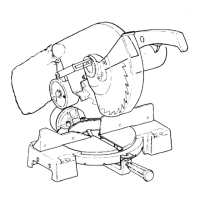
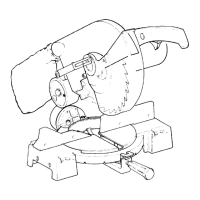
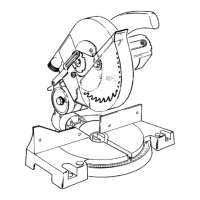
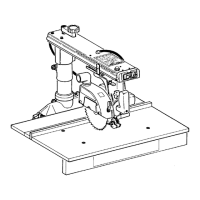




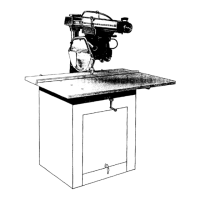
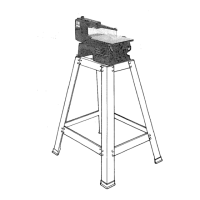


